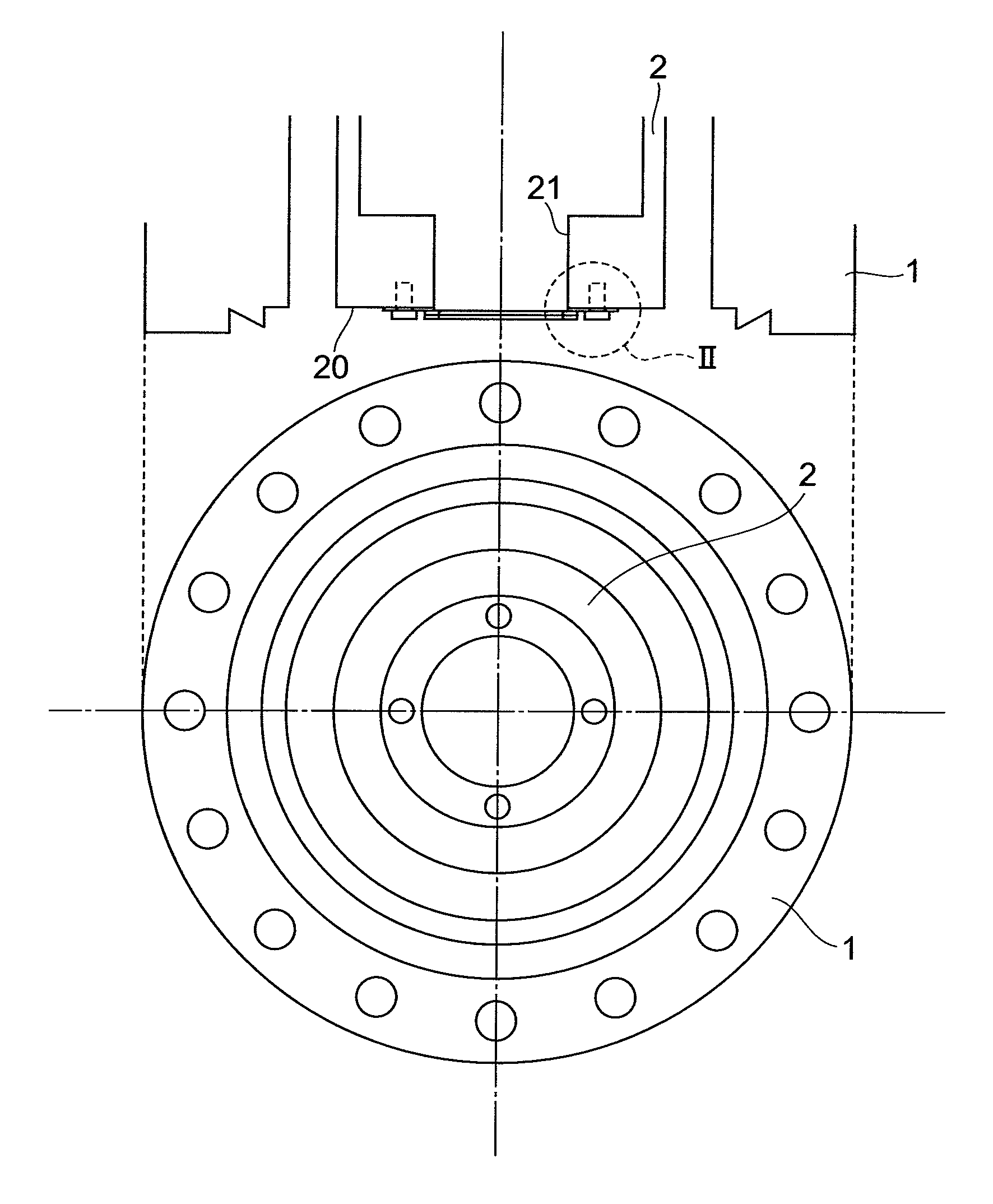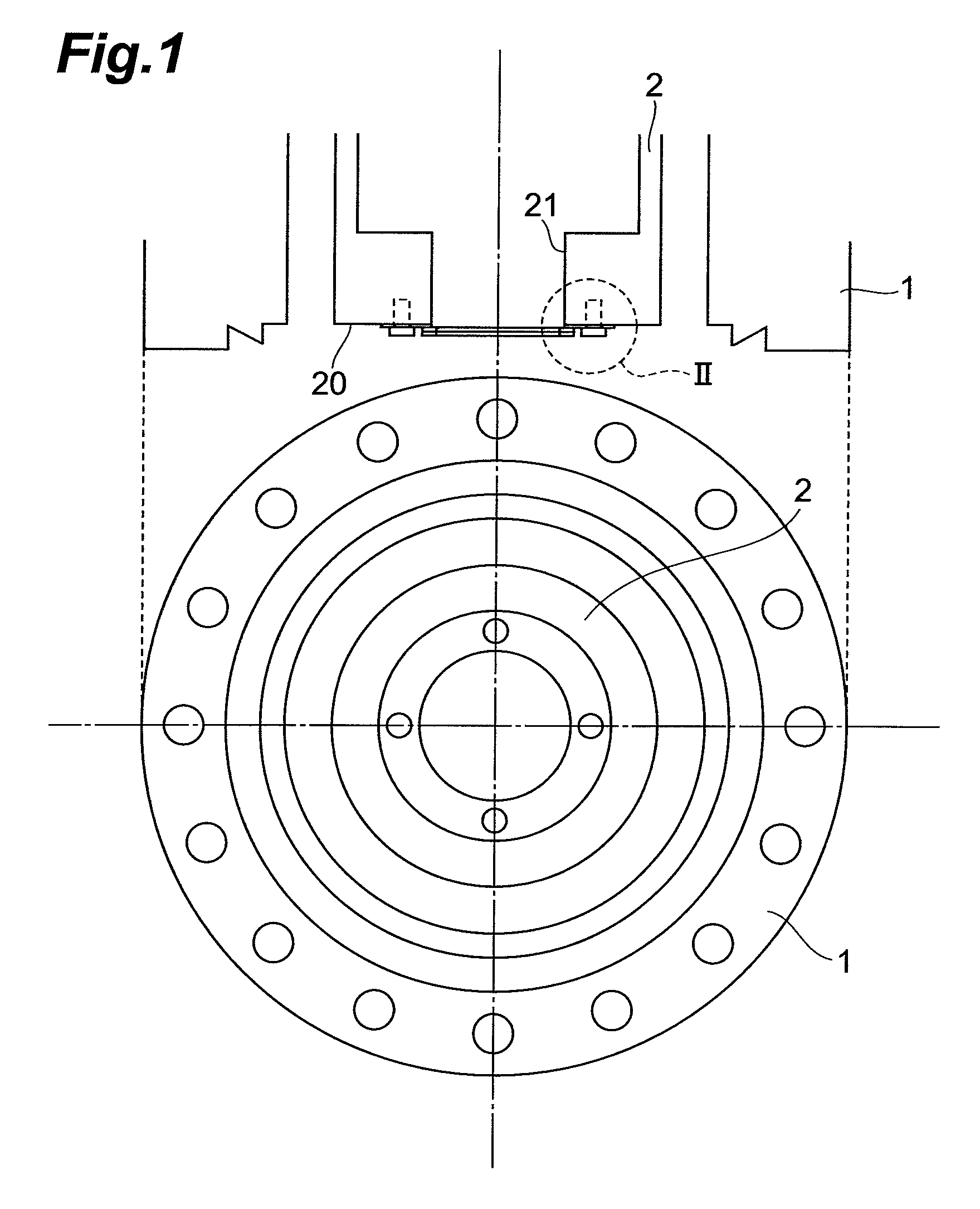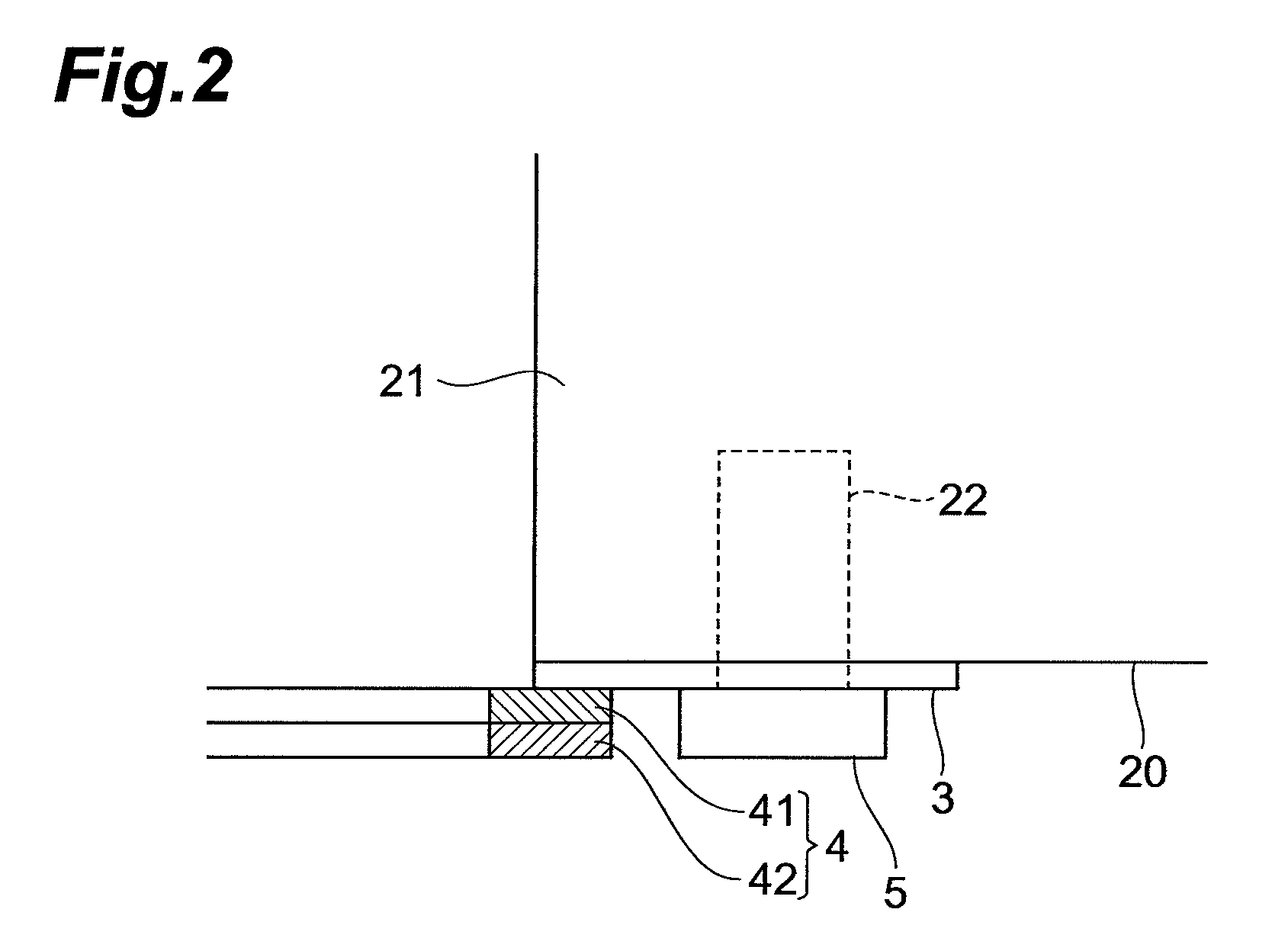Mass spectrometer
a mass spectrometer and mass spectrometer technology, applied in mass spectrometers, particle separator tube details, separation processes, etc., can solve the problems of difficult to secure the orthogonality between the ion track and the incident surface of the mcp, affecting the detection accuracy of the time of flight, etc., to achieve easy replacement of the mcp, easy to secure the orthogonality, and easy to ensure the accuracy of the mcp
- Summary
- Abstract
- Description
- Claims
- Application Information
AI Technical Summary
Benefits of technology
Problems solved by technology
Method used
Image
Examples
first embodiment
[0030]FIG. 1 is a view showing a structure of a flight tube end portion in a mass spectrometer according to the present invention, FIG. 2 is an enlarged view of a II part thereof, FIG. 3 is a view showing a structure of a vacuum flange, FIG. 4 is an enlarged view of a IV part thereof, FIG. 5 are views showing a structure of a circuit board, FIG. 6 shows an equivalent circuit thereof, and FIG. 7 shows an assembled state.
[0031]The flight tube 2 is a cylindrical structure to be arranged in a body 1 of the mass spectrometer. At its end portion of a side that has not been illustrated, an ion source is arranged. On the other hand, at the illustrated end portion, two disk-like MCPs 41 and 42 (hereinafter, collectively referred to as an MCP group 4) are arranged. The MCPs 41 and 42 are bonded to each other by a conductive thermoplastic adhesive, and further, an MCP-IN electrode 3 formed of an annular metal is bonded to an MCP 41-side surface by the same conductive thermoplastic adhesive. Th...
second embodiment
[0040]In the second embodiment shown in FIG. 8 and FIG. 9, an insulator 52 being a circular cylindrical insulator is arranged on a through-hole for a screw provided in the MCP-IN electrode 3, a hooked clamp 51 is thereon arranged, and by fixing the clamp 51, the insulator 52, and the MCP-IN electrode 3 with a screw 50 screwed in a screw hole of the flight tube 2, the MCP group 4 is fixed. The screw 50 is an insulating screw formed of a PEEK (polyetheretherketone) resin or a Teflon resin, and the clamp 51 and the MCP group 4 are separated in potential from each other.
third embodiment
[0041]In the third embodiment shown in FIG. 10 and FIG. 11, the MCP-IN electrode 3 is fixedly fitted at an end portion of the flight tube 2 by bonding, welding, or the like, and thereon attached via an arc-shaped insulator 54 is a fixing plate 53 formed of a metal plate which is likewise in an arc shape, by an adhesive or the like. The MCP group 4 is arranged inserted in a groove part formed between the fixing plate 53 and the MCP-IN electrode 3. In this case as well, the fixing plate 53 and the MCP group 4 are separated in potential from each other.
[0042]It becomes possible also in these second and third embodiments as in the first embodiment to secure orthogonality of the incident surface of the MCP group 4 with respect to the ion flight track in the flight tube 2 at high accuracy. Moreover, in these embodiments, there is also an advantage that only the MCP group 4 can be easily replaced.
[0043]The configuration of the detector side is also not limited to that shown in the first em...
PUM
 Login to View More
Login to View More Abstract
Description
Claims
Application Information
 Login to View More
Login to View More - R&D
- Intellectual Property
- Life Sciences
- Materials
- Tech Scout
- Unparalleled Data Quality
- Higher Quality Content
- 60% Fewer Hallucinations
Browse by: Latest US Patents, China's latest patents, Technical Efficacy Thesaurus, Application Domain, Technology Topic, Popular Technical Reports.
© 2025 PatSnap. All rights reserved.Legal|Privacy policy|Modern Slavery Act Transparency Statement|Sitemap|About US| Contact US: help@patsnap.com



